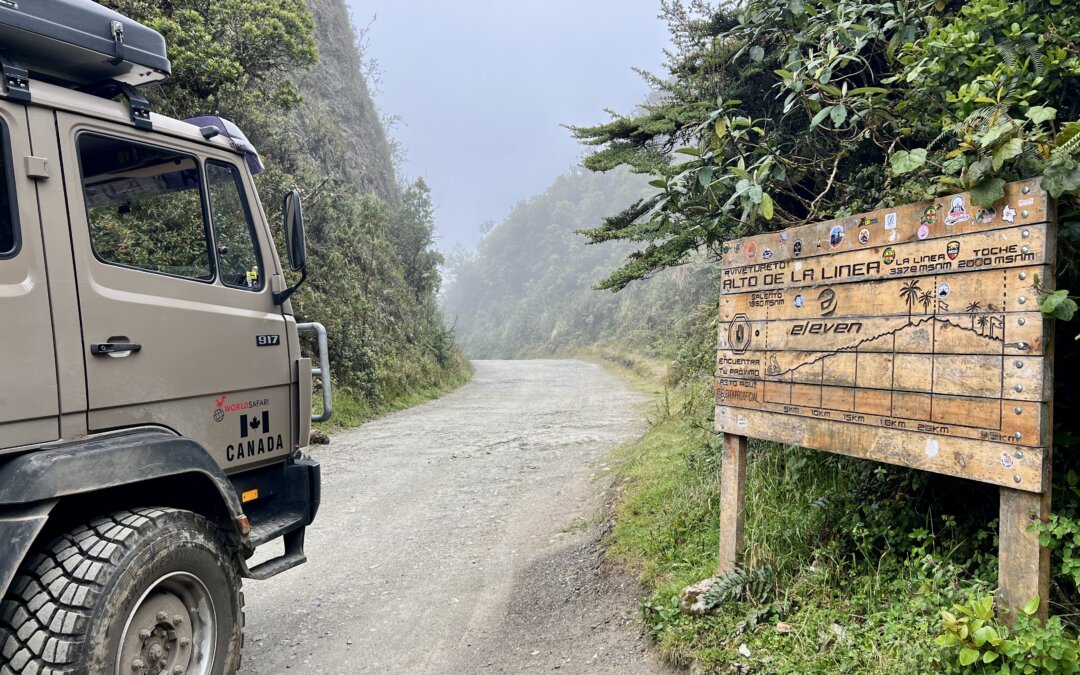May 13th. There is a road leaving the back corner of Salento that is lesser known to travellers. We were told by some locals that it was definitely worth the drive—that it would be a full day’s journey to cover the 78 km of dirt road leading over the mountains and down to Cajamarca. We had just been saying how we were keen to explore more back roads, so this seemed like the perfect opportunity.
The plan was to leave the coffee farm at 6 a.m. But things didn’t quite go to plan. Mario was having trouble retracting his levelling equipment; after a bit of digging around, he discovered the wire ran behind the oven, and had burned out. By the time the problem was fixed, an hour had slipped by. Getting up, dressed, beds put away, and breakfast cooked and cleaned up in time is never simple—but for drives like these, getting an early start is essential to ensure we have enough daylight to comfortably reach our next destination before dark.
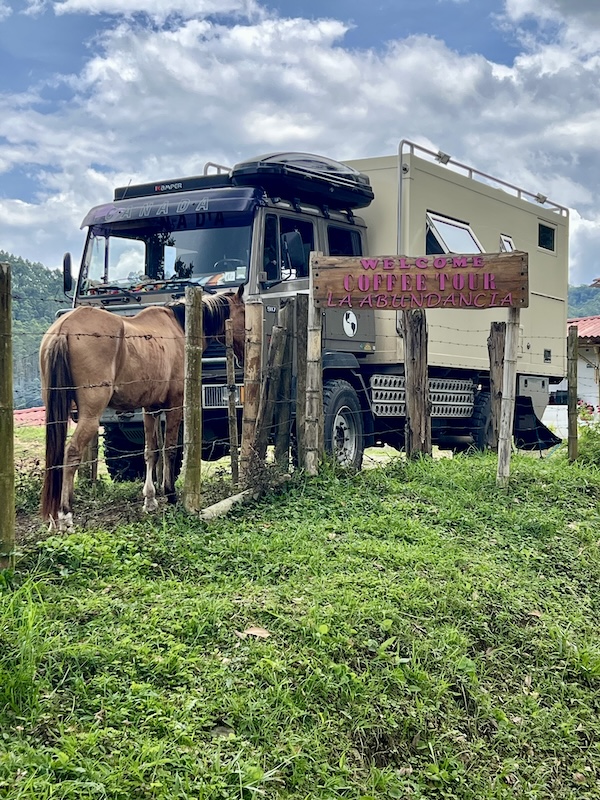
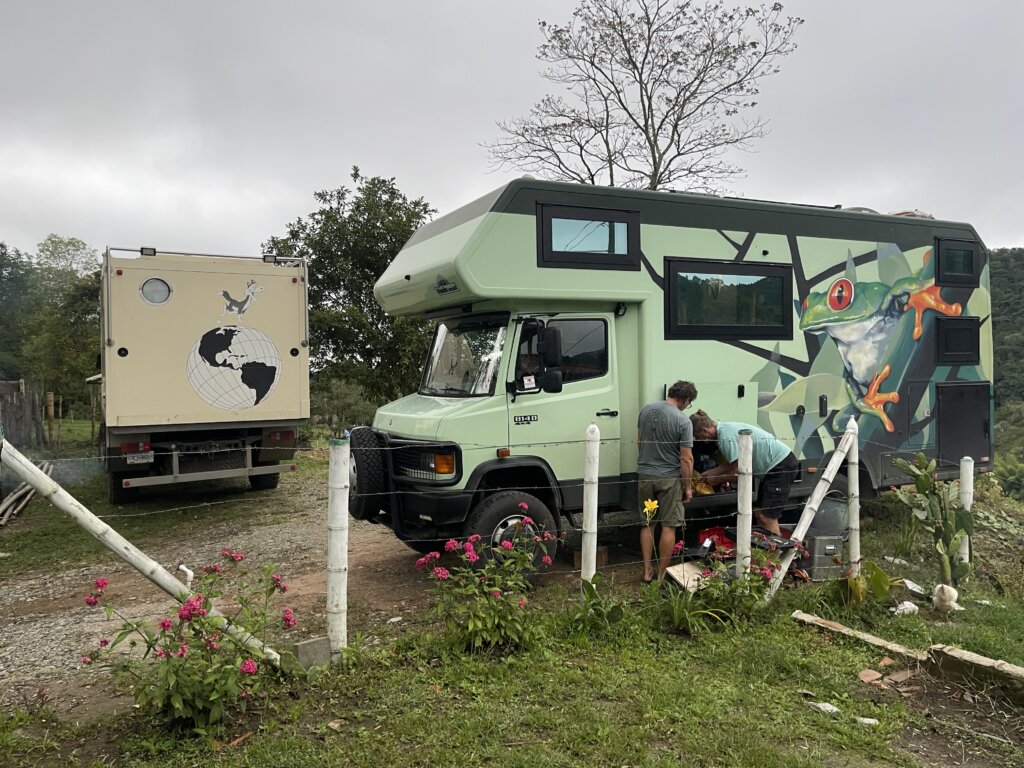
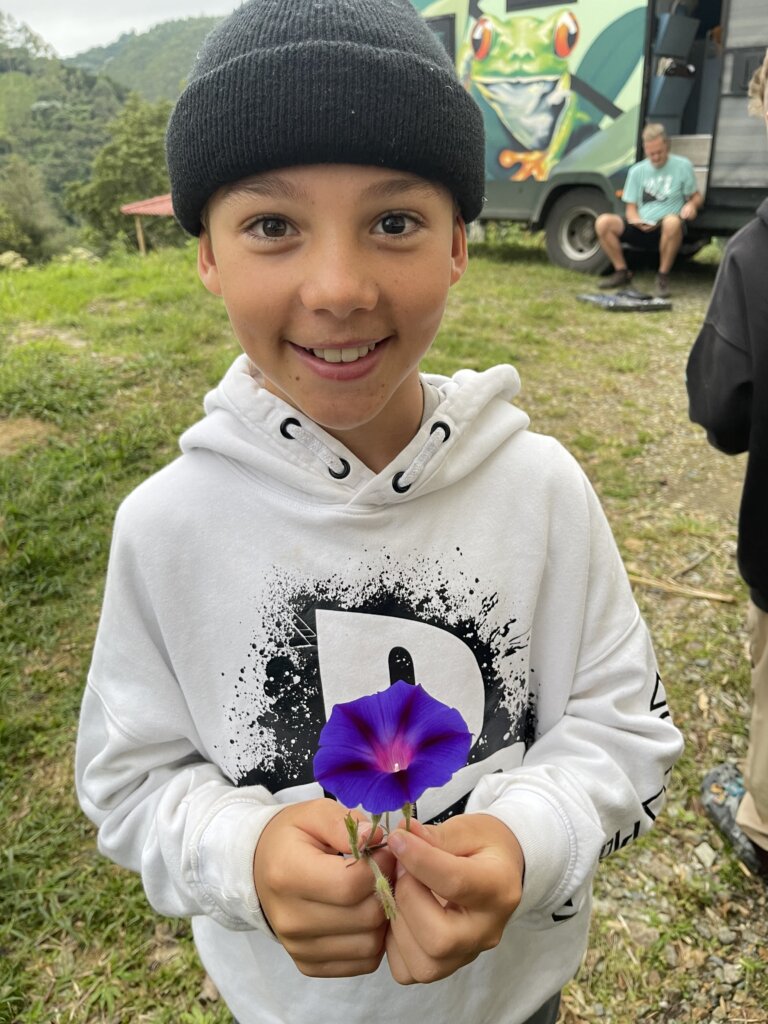
Finally, we were rolling, and the road wasted no time in reminding us what we’d signed up for. It twisted and climbed almost immediately, hugging steep ridge lines and diving into folds of endless green hills. What the route lacked in smoothness, it more than made up for in beauty. We moved through a patchwork of native bush and farmland, sparsely dotted across the valley we could see small houses. Living here is truly remote, the rest of the world would tick by and nobody would know.
But the true magic of the drive was see the wax palms—Colombia’s national tree—towering impossibly high above the forest canopy like something from a dream. With their long, spindly trunks and tufts of green far above, they looked like they’d wandered out of a Dr. Seuss illustration. Surreal, elegant, and completely captivating. I wonder if he ever visited this place?
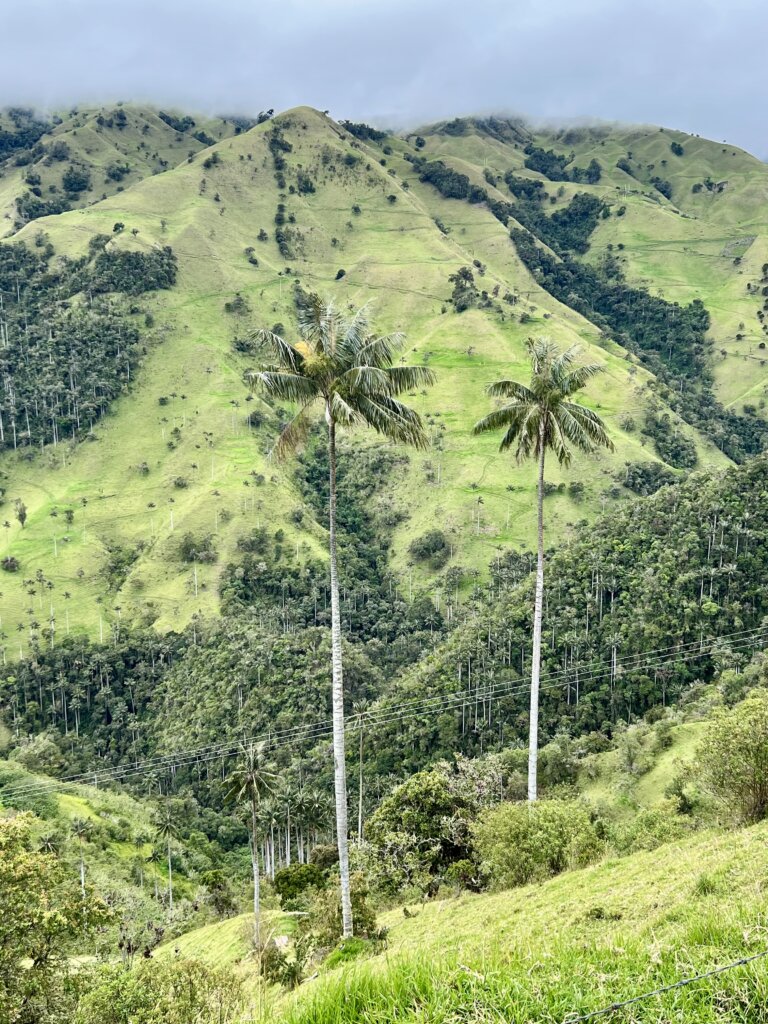
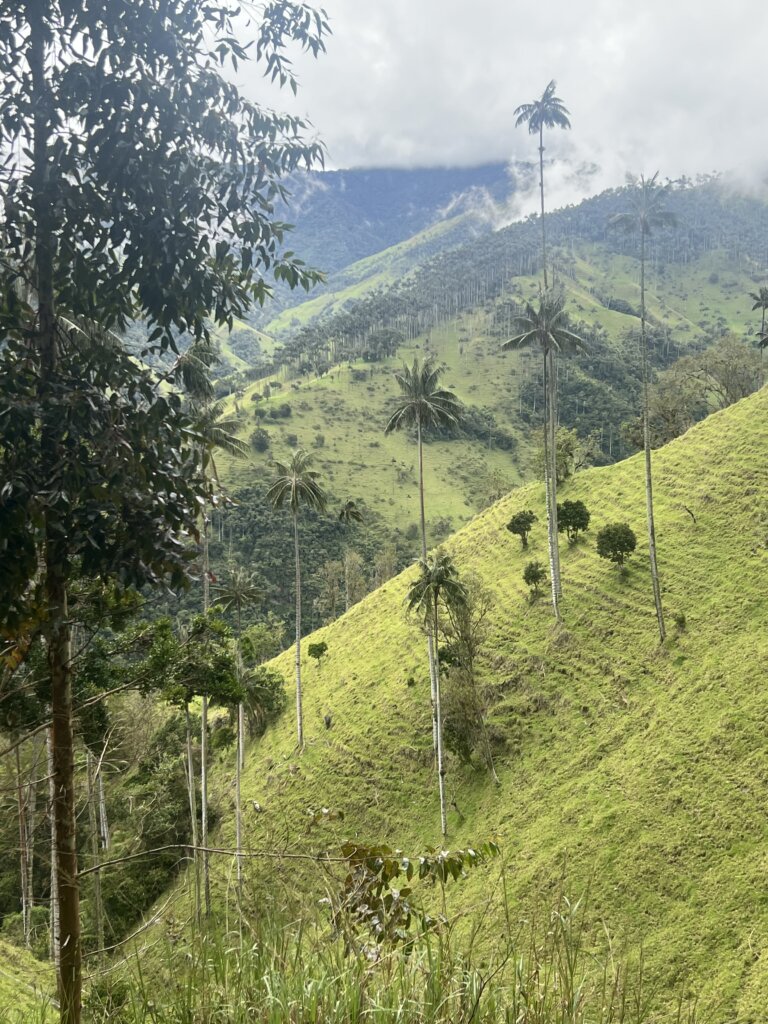

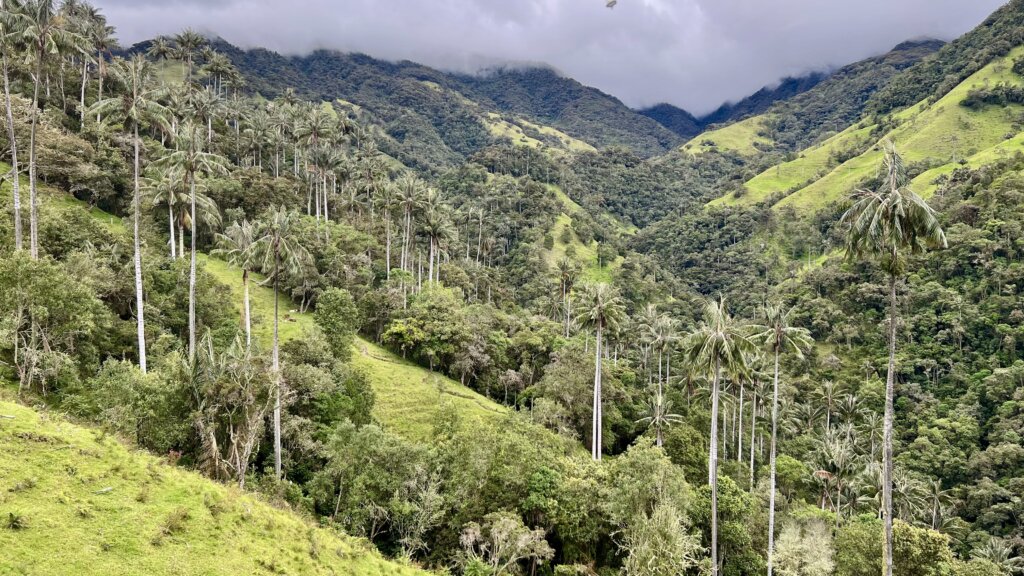
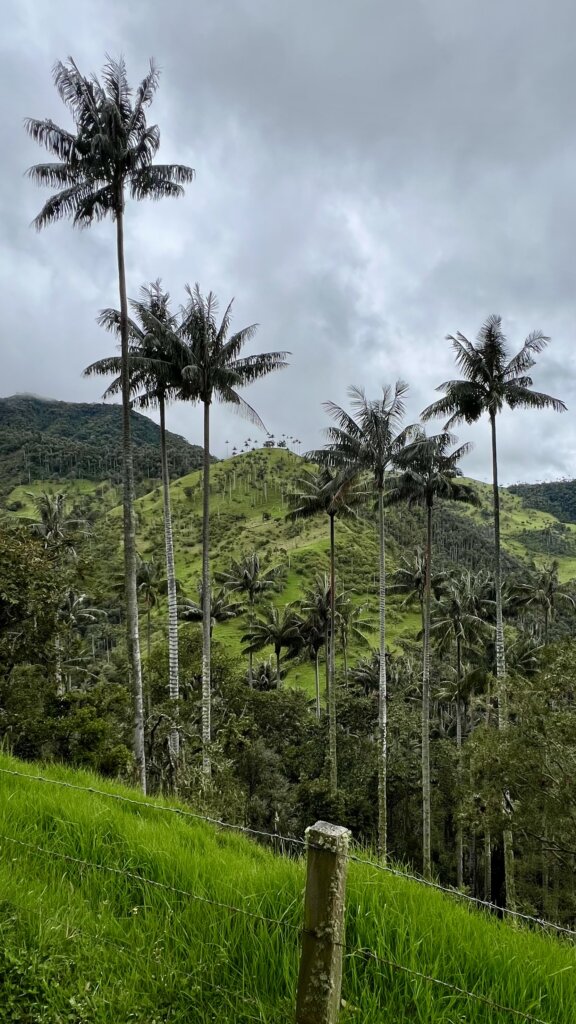
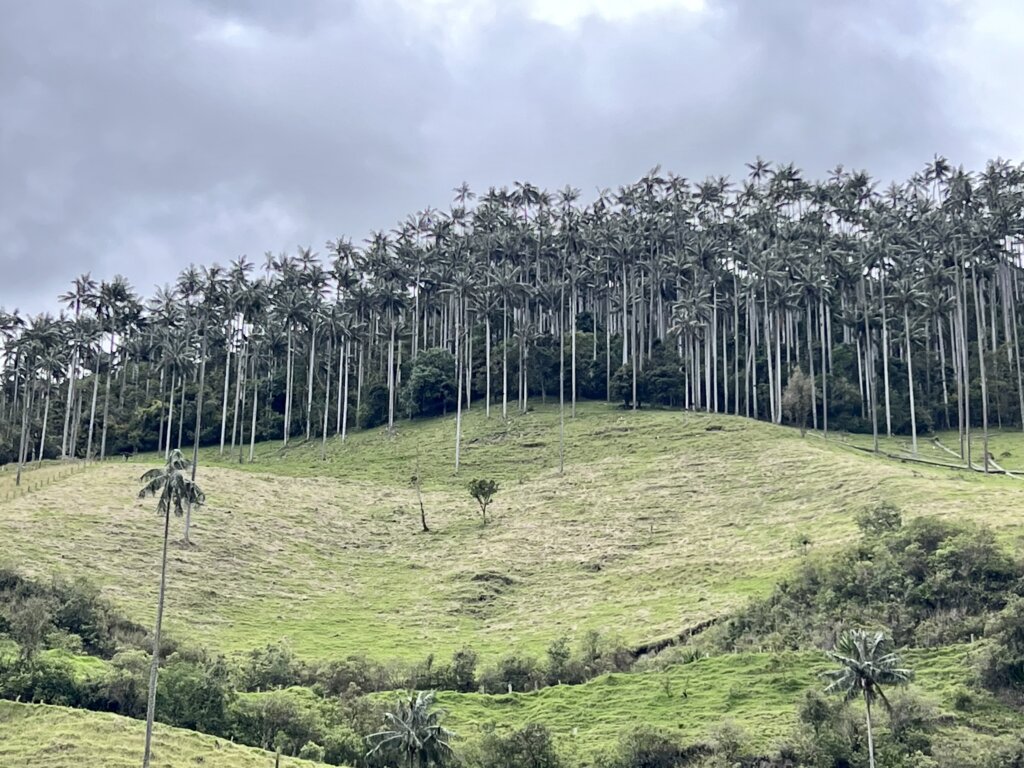
At 10am Mario and Wenke had to pull over so Klass could attend his online school lessons. We decided to keep going, with the goal of clearing the valley before nightfall. The road didn’t ease up—tight corners, steep drops, and blind curves certainly kept us alert. The long descent was a tease as the road kept turning back on us, disappearing into yet another valley. Driving was slow, often no faster than 30km/h. Allowing us the opportunity to really appreciate the beauty of where we are, not a lot of traffic here, we saw just a hand full of vehicles. Closer to the town of Cajamarca more and more of the land was cleared for farming. I joked that this is the birth place of vertical farming as the mountain sides are literally straight up and covered in neatly organized crops. I can’t imagine how people harvest their crops, it’s all done by hand with many hours of back breaking work in rubber boots.
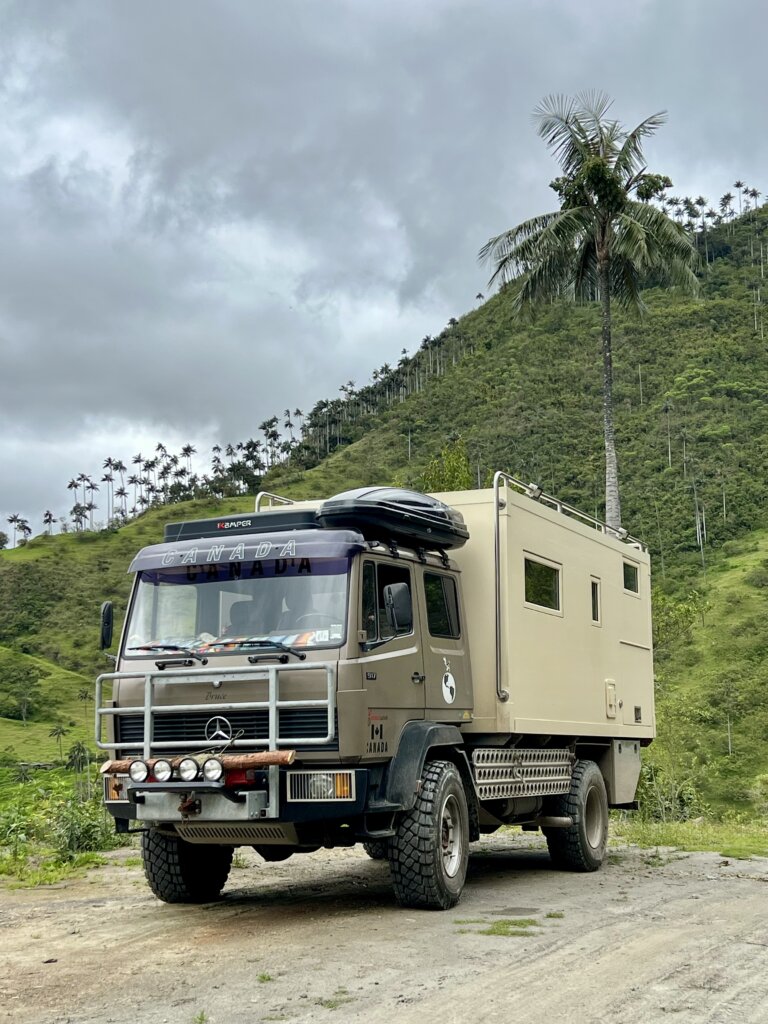


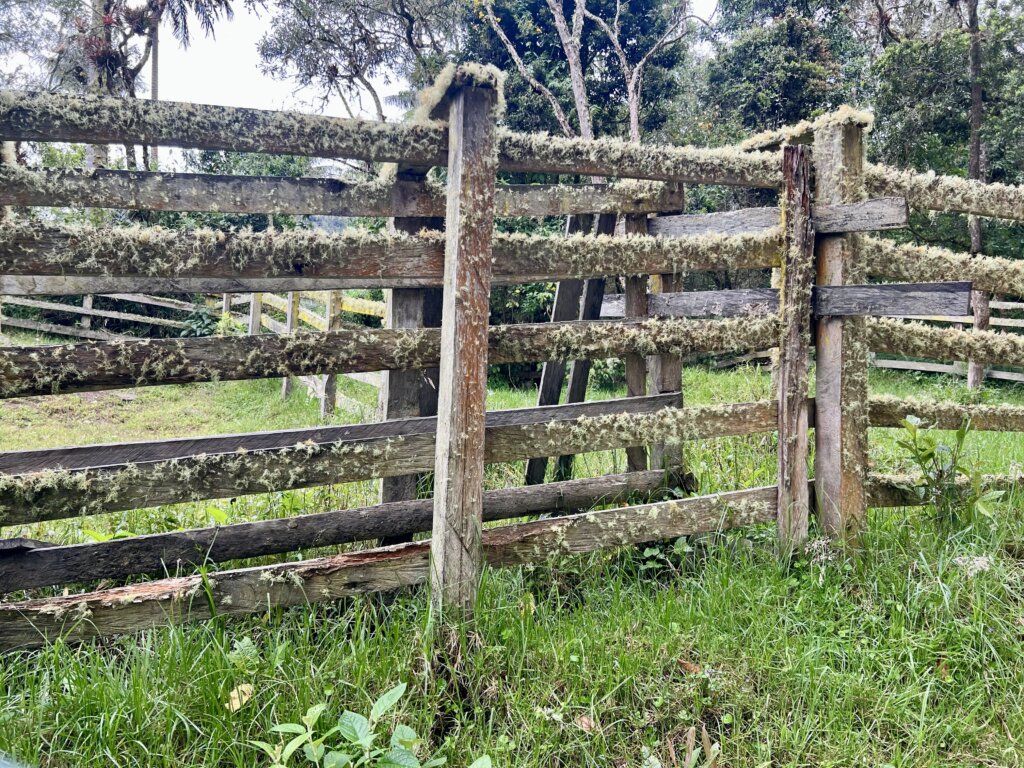
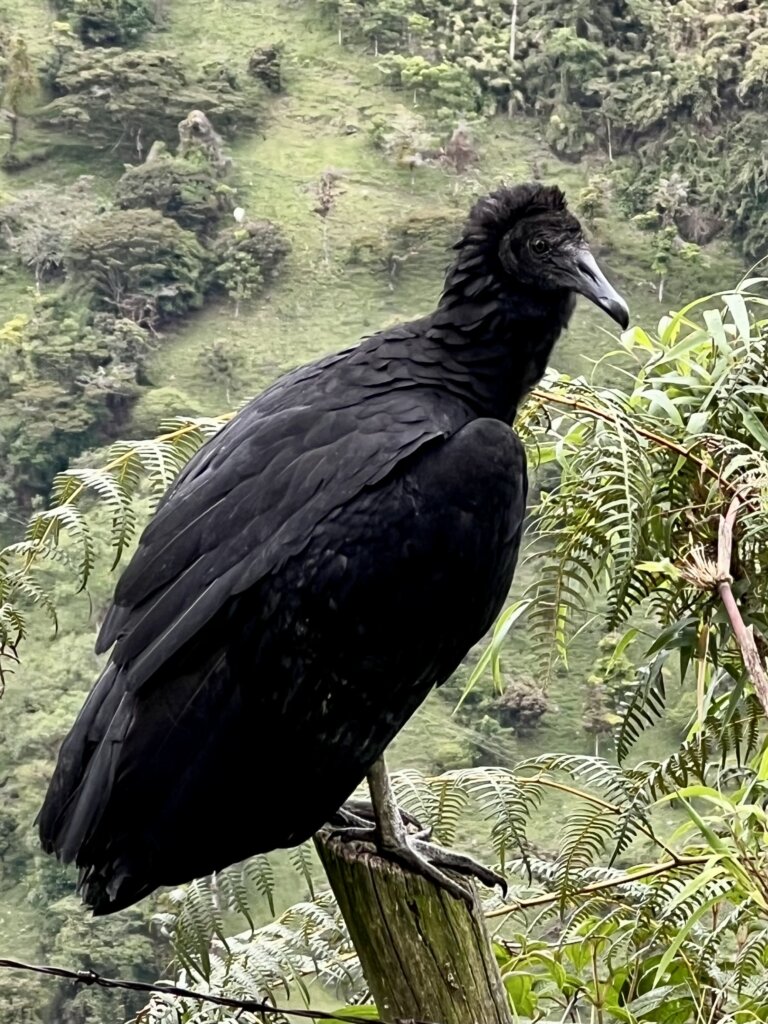
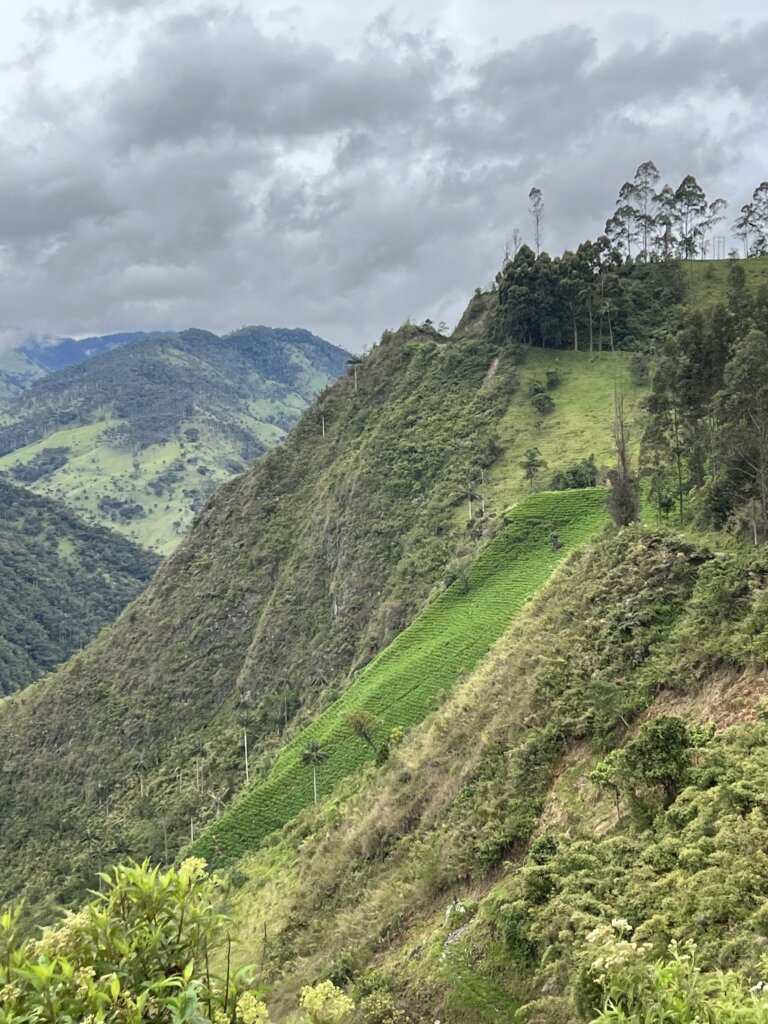
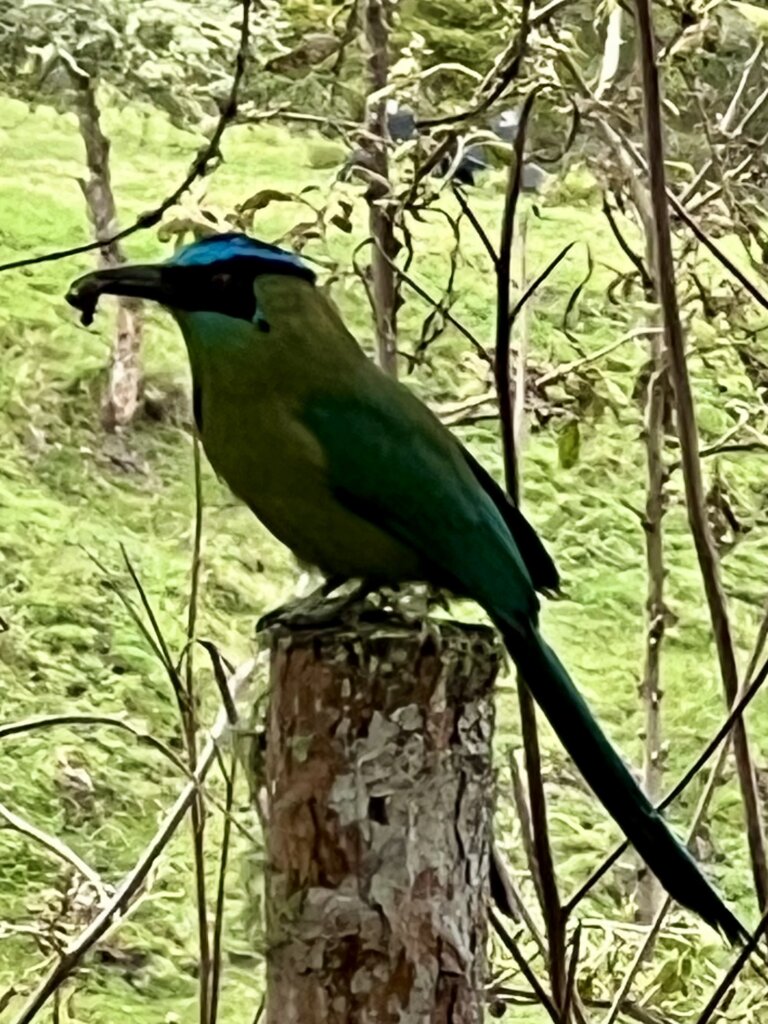
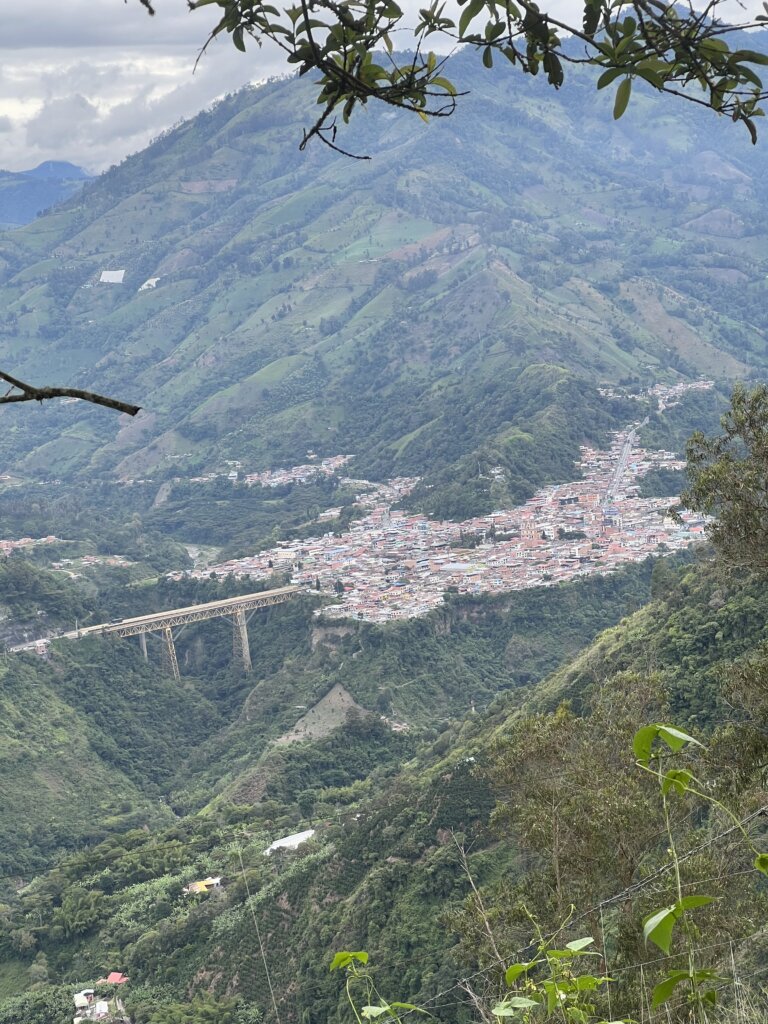
Because so much of the bush has been cleared, the hillsides have become very unstable. Recent heavy rains have triggered numerous mudslides. By the time we finally hit pavement again, the light was fading fast.
Our 78 km, all-day drive took us through some of the most beautiful parts of Colombia — hidden from view and seen by few. I feel incredibly fortunate to have experienced it.
It was, without a doubt, our favorite driving day of the trip. Tim did an amazing job keeping us safe, especially in the many spots where the road was barely wide enough for the truck — with butt-clenching, vertical drops, death really was just inches away.
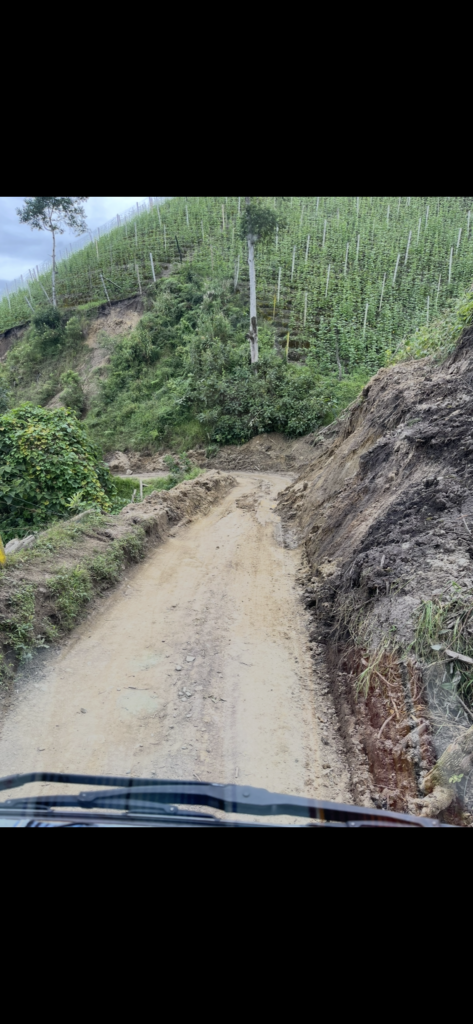
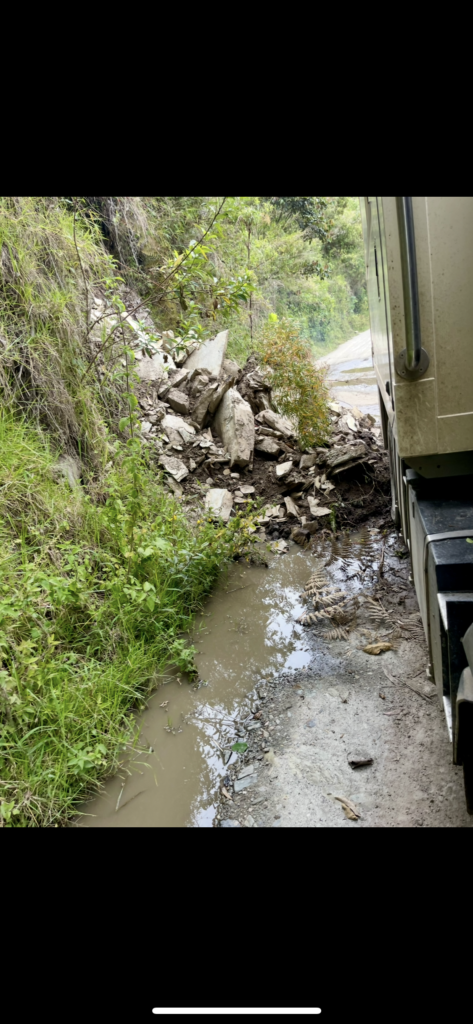
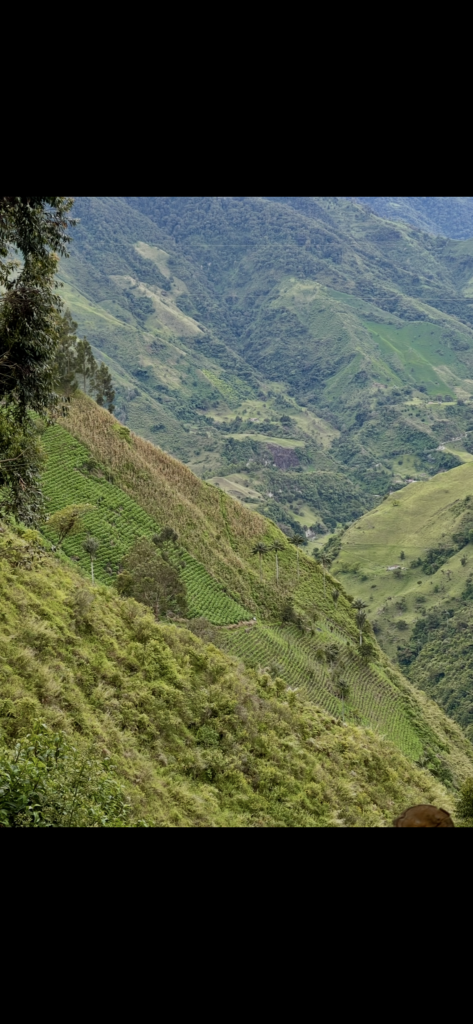
We were happy to be back on pavement — though less thrilled to be joining the long line of heavy trucks slowly making their way across the country. In Colombia, everything moves by truck; the mountainous terrain makes rail transport nearly impossible.
It took another hour and a half of crawling along behind taillights before we finally found a gas station to spend the night. Not the most glamorous of camps, but for 10,000 pesos (about $3), we had night security and a hot shower — no complaints.
Mario and Wenke were still a couple of hours behind us and planned to spend the night somewhere in the valley. When we last heard from them, they were hoping to reach Toche, an indigenous community. But pushing on past that point wouldn’t have been wise — the road ahead was partially blocked by multiple landslides. They ended up stopping at a tiny roadside pullout for the night.
Next stop, the Tatacoa Desert…

